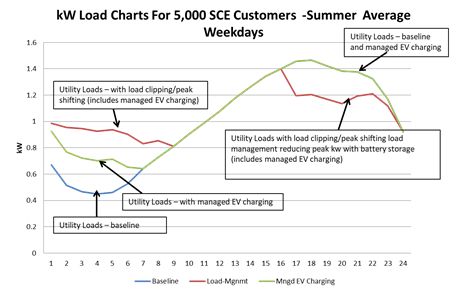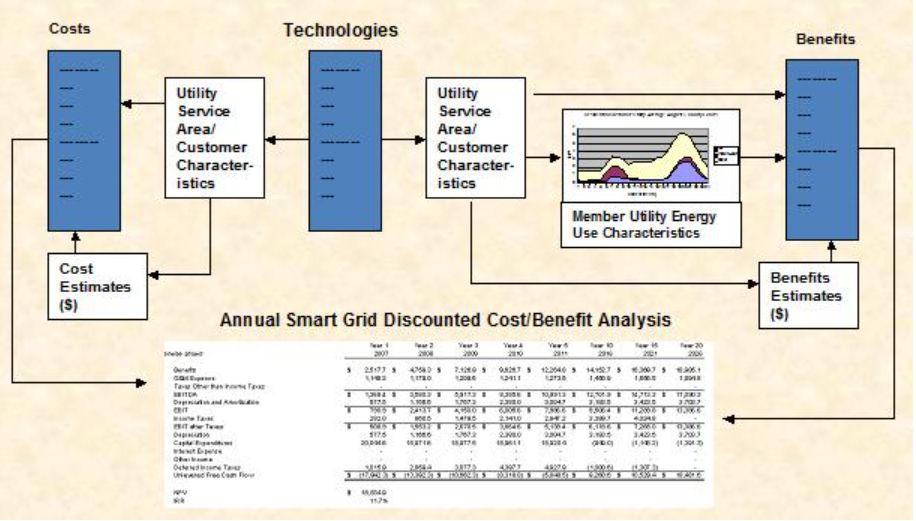|
Marketing DER and Other Electric Technologies & Partnerships to Utilities with MAISY
Business Case Evaluations
Business case marketing provides a critical motivating input in purchase and/or collaborative alliance decisions.
This input is especially important in marketing & partnership offers to electric utilities who often lack
sufficient customer information to confidently consider specific technology/services sales proposals.
MAISY Utility Customer Databases uniquely provide hourly and 15-minute kW loads for more than 7 million individual
US consumers to form the basis for comprehensive business case analysis.
These electric use data along with MAISY consumer dwelling unit, income, demographics and other characteristics provide the
most accurate and compelling business case analysis to quantify benefits associated with a wide variety of
EV, battery, solar and other
electric technology manufacturer marketing proposals.
This detailed information is crucial in business case analysis when the technology or service uptake is different for different customer segments
(e.g., VPP using Tesla battery storage) and/or where hourly load impacts vary across the customer population.
MAISY Utility Customer Database Information has been applied in a variety of successful utility business case
marketing initiatives, several of which are as summarized below.
Example: Electric Vehicle (EV) Virtual Power Plant (VPP) Business Case Analysis
 MAISY Utility Customer Database hourly kW load data have been used in utility business case analysis to
demonstrate benefits of virtual power plants by battery, solar and automobile companies. Several of these
marketing analyses have led to the initiation of collaborative pilot programs.
MAISY Utility Customer Database hourly kW load data have been used in utility business case analysis to
demonstrate benefits of virtual power plants by battery, solar and automobile companies. Several of these
marketing analyses have led to the initiation of collaborative pilot programs.
An example VPP white paper analysis of Southern California Edison customer hourly loads and
commuting behavior indicates that residential peak period loads can be completely offset with a
VPP program. This particular study illustrates the benefits of a collaborative program by SCE and Tesla to promote Tesla
EV ownership and consumer participation in a VPP program.
Click here to review the 4-page white paper
using MAISY utility
customer data to evaluate SCE (EV) virtual power plant potential.
One of the white paper graphics is shown on the right.
This study analyzed data on 5,000 individual SCE utility customers commuting data and battery reserves
after afternoon commuting to simulate the ability of a VPP to clip the
residential sector peak while constraining EV overnight recharging to avoid an overnight peak.
Study results show that, at a market share of just 10 %, combining EV battery electricity
supply to the grid in peak period hours along with managed overnight charging can provide an EV
virtual power plant (VPP) that completely shaves residential peak demands.
Savings are estimated at $560 per EV customer, even after accounting for the cost of recharging the EV battery.
Expected rapid growth of the EV market along with the significant benefits shown here of even limited EV market
saturation highlight the urgency of developing appropriate utility programs.
Example: Microgrid Business Case Analysis
Microgrid Business Case Analysis. Microgrids are composed of utility customer
loads and distributed energy resources (DER) within electrical boundaries that operate in
both grid-connected or island-mode.
The ability of a microgrid to isolate itself from the larger grid requires matching
hourly load demands of individual residential and commercial utility customers and distribute energy sources
within the microgrid.
The competitive business development arm of a large US electric
utility has utilized a sample of more than 100,000 MAISY utility customer hourly and
15-minute loads across several states to assess the business case for investing in
the development of microgrids.
Example: Smart Grid Technology Business Case Analysis
 Smart grid technology marketing is a good example of the importance of detailed business
case analysis in utility decision-making. Smart grid systems business case evaluations
require impact analysis across a variety of distribution equipment, control strategies,
utility controlled customer equipment, and behavioral demand response impacts. Since most
of the savings are derived from reducing utility peak period loads through a reduction in
customer and distribution system peaks, utility customer hourly loads are a critical component
in the analysis. In addition, modeling impacts of demand response programs requires analysis of
individual customer segments so having access to a large sample of individual customer records
is an important contribution to analysis accuracy.
Smart grid technology marketing is a good example of the importance of detailed business
case analysis in utility decision-making. Smart grid systems business case evaluations
require impact analysis across a variety of distribution equipment, control strategies,
utility controlled customer equipment, and behavioral demand response impacts. Since most
of the savings are derived from reducing utility peak period loads through a reduction in
customer and distribution system peaks, utility customer hourly loads are a critical component
in the analysis. In addition, modeling impacts of demand response programs requires analysis of
individual customer segments so having access to a large sample of individual customer records
is an important contribution to analysis accuracy.
The Smart Grid Research Consortium (SGRC) used MAISY Utility Customer Database
hourly loads to provide analysis for fifteen electric cooperative and municipal utilities.
A sample of residential and commercial utility customers was drawn from the MAISY Utility Customer Database for each
of the utilities. Information on each customer included hourly loads, psychographic and firmographic information. Impacts
of the various technologies and programs were simulated for each customer to estimate changes in system peak which was
then applied to determine avoided utility supply cost and utility and customer benefits.
Click here for more information on the SGRC business case analysis.
The graphic to the right illustrates the comprehensive nature of the SGRC analysis
MAISY Databases Provide Unique Utility Customer Data to Support Comprehensive Utility Business Case Marketing Whether Selling
Directly to Utility Clients or Proposing Collaborative Initiatives.
MAISY Database Summary:
1.
The most comprehensive, up-to-date utility customer energy use and customer characteristics for any geographic area in the US
2.
More than 7 million individual utility customer records with building, equipment, operating, occupant, end-use and 8760 hourly energy data
2.
Electricity use for hourly and 15-minute kW load intervals
3.
Segment variables for each record (e.g., medical office, single-family homes, etc.)
4.
CSV and Excel workbook format for easy access and analysis
5.
Optional customized database interface software to extract and analyze data for client-specific applications
6.
Jackson Associates can provide data extractions and analysis to support all applications
7.
Vetted/applied by over 200 organizations for technology and
energy-related market analysis,
product development and assessment,
cost-of-service studies, energy efficiency, smart grid analysis, new technology analysis
(PV, CHP, battery, fuel cells, thermal storage, wind, flywheels
and more), REP and ESCO target marketing and more
|
|

 MAISY Utility Customer Database hourly kW load data have been used in utility business case analysis to
demonstrate benefits of virtual power plants by battery, solar and automobile companies. Several of these
marketing analyses have led to the initiation of collaborative pilot programs.
MAISY Utility Customer Database hourly kW load data have been used in utility business case analysis to
demonstrate benefits of virtual power plants by battery, solar and automobile companies. Several of these
marketing analyses have led to the initiation of collaborative pilot programs.
 Smart grid technology marketing is a good example of the importance of detailed business
case analysis in utility decision-making. Smart grid systems business case evaluations
require impact analysis across a variety of distribution equipment, control strategies,
utility controlled customer equipment, and behavioral demand response impacts. Since most
of the savings are derived from reducing utility peak period loads through a reduction in
customer and distribution system peaks, utility customer hourly loads are a critical component
in the analysis. In addition, modeling impacts of demand response programs requires analysis of
individual customer segments so having access to a large sample of individual customer records
is an important contribution to analysis accuracy.
Smart grid technology marketing is a good example of the importance of detailed business
case analysis in utility decision-making. Smart grid systems business case evaluations
require impact analysis across a variety of distribution equipment, control strategies,
utility controlled customer equipment, and behavioral demand response impacts. Since most
of the savings are derived from reducing utility peak period loads through a reduction in
customer and distribution system peaks, utility customer hourly loads are a critical component
in the analysis. In addition, modeling impacts of demand response programs requires analysis of
individual customer segments so having access to a large sample of individual customer records
is an important contribution to analysis accuracy.